We are around the kitchen table in Mary and John Breen’s lovely home in the townland of Attybreaga in east Limerick. What makes the place particularly interesting is that the county boundary between Limerick and Tipperary runs along the road outside their front door. So with farmers from Tipperary, Limerick and Clare around the table it was hard to avoid chat about hurling.
John and Mary extended the kitchen a few years ago and with plenty of space, a double height ceiling and big windows to take in the smashing views, it’s a great family room.
Early loss
John’s mother was born and reared in Attybreaga and his father married in. They had two boys, John and Denis who were born within a year of each other. Sadly their mother died from cancer when they were just 11 and 12. And if that wasn’t bad enough, their father died a few years later after a heart attack. The brothers were just 17 and 18.

John Breen. \ Donal O'Leary
“People thought we wouldn’t manage but we kept going. We were hand milking 15 cows and when we went up to 22, the hand milking was a torture. We got a bucket plant milking machine and that, along with help from our uncle Ned Moroney, meant we managed.”
“As I’ve gotten older I think it’s a huge, huge asset to have your parents alive and with you into your 30s at least. We had family and good neighbours, but you need your parents to point you in the right direction,” says John with a sense of sadness.
Love at first sight
Mary Breen née Franklin grew up about eight miles from where John lived. It was love at first sight when they met in the Golden Vale ballroom in Dundrum in 1976. “John was the first and only man in my life,” says Mary with a smile.
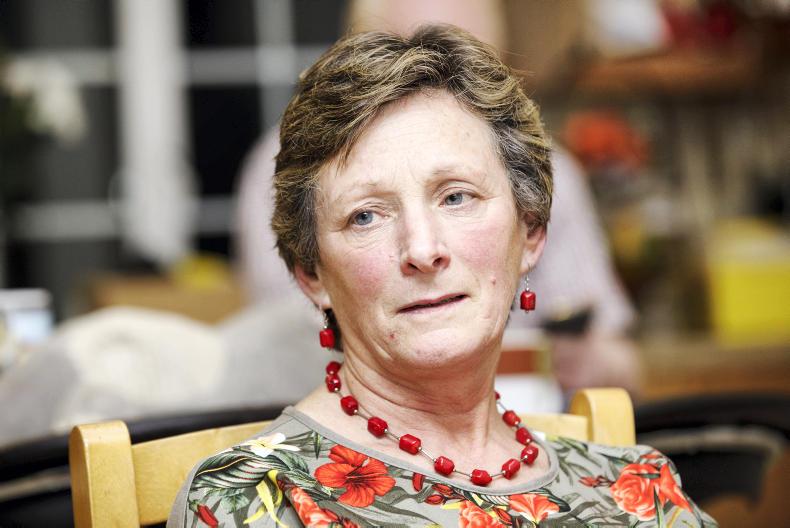
Mary Breen. \ Donal O'Leary
She wasn’t from a farming background but when visiting her uncles, she loved hand milking cows. After school, Mary won a scholarship to study agriculture and home economics with the Sisters of Charity in Dunmanway. She went from there to Golden Vale Co-op to train as a cheese maker and got all her exams. Then she broke her elbow and – try as she might – that finished her as a cheesemaker.
Mary and John were married in September 1981 and they got two Friesian heifers as presents and that helped bring cow numbers up to 35.
A grá for farming
Pierce Delaney was the first in his family to go farming. Originally from Ballincollig, Co Cork he upped sticks and moved to Ballyagran in Co Limerick where he bought 70 acres of land. “I always had a grá for farming and just went for it,” he says.
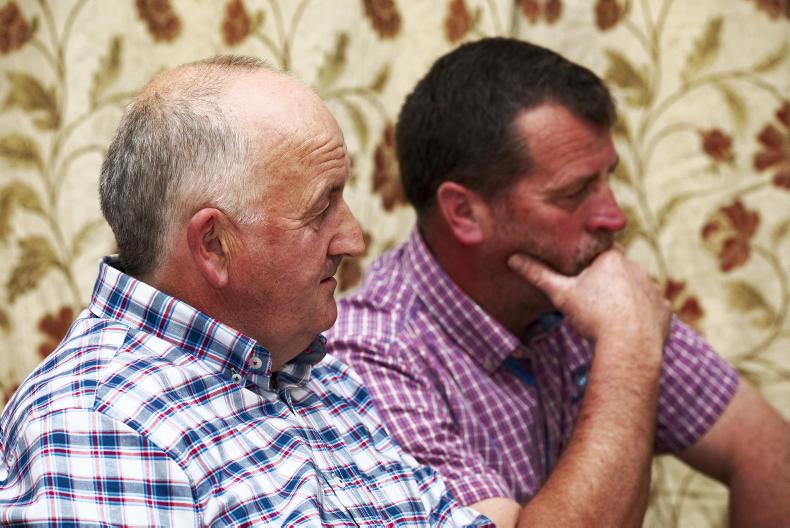
John Brew and Pierce Delaney. \ Donal O'Leary
Pierce learned his trade on the Farm Apprenticeship Scheme. That was an eye-opener for him. “There was a big variation in the type of farming family you could be placed with. In one place you’d be treated as slave labour, while in another you were like a member of the family.” Pierce started from scratch, buying the farm and building up facilities. He started with a quota of 30,000 gallons and milks 44 cows today.
Tough times
Neighbour Michael Breen is from Cullen, Co Tipperary and is no relation to the other Breens around the table. He left school at 15 as his dad was unwell, suffering from Parkinson’s and depression for the best part of 18 years.
He was in dairying all through the 1970s and 1980s and was depopulated with brucellosis in 1991.
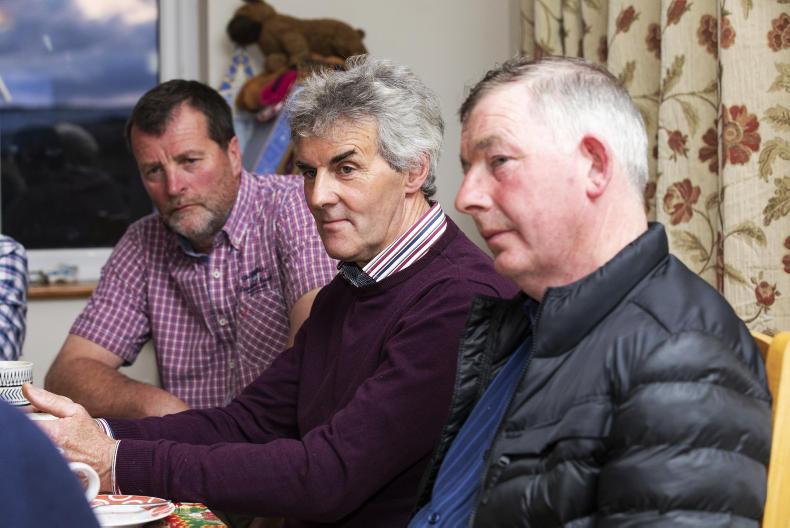
Pierce Delaney, John Breen and Michael Breen. \ Donal O'Leary
“That was a tough time for us all. With my father ill, we leased the milk quota and got into dry cattle. Then after a few years it was a case of ‘use it or lose it’ with the milk quota and the lessee bought it out.”
These days it’s sucklers, mostly Charolais and a few Limousins that Michael farms. He joined the Beef Data and Genomics Programme (BDGP) scheme with a six-year contract and is sorry he did. “There’s no great interest in sucklers anymore and the returns are poor. But sure we have to stick with the contract and hope to re-coup the losses.”
Looking to the future
Also from Cullen, John Breen – again no relation to the other Breens – has been farming with his father and uncle for seven years. After secondary school he studied chemistry at university, before studying Pallaskenry Ag College.
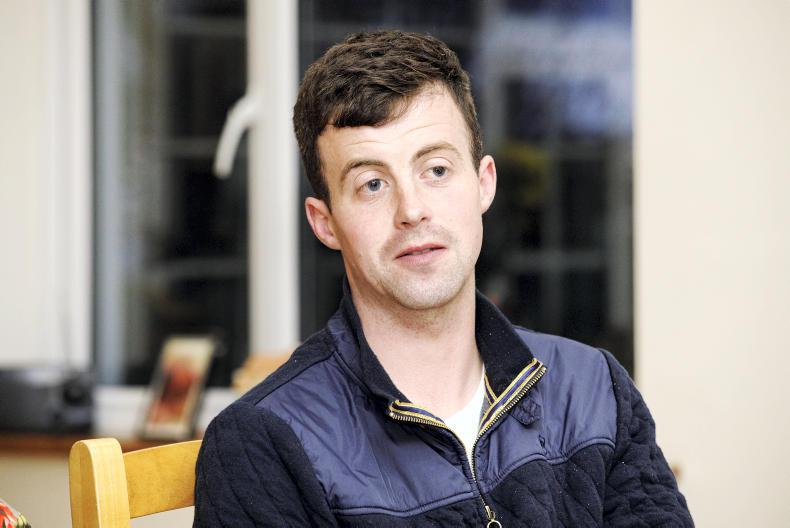
John Breen. \ Donal O'Leary
“There were a good few from around here going and that influenced me. Also, a farm beside us was up for sale and we bought it and I doubt that would have happened if I wasn’t interested in coming home to farm.”
Unlike some of the kitchen tables we’ve been chatting around, here in the parish of Cullen there’s plenty of young blood coming into farming. “I could count 15 and more pals of mine who are farming. With milk quotas gone, lads were able to get going with the young entrant scheme. At home we are milking 260 cows, that’s double the number since I came home seven years ago,” says John.
An early start
“We are in dairying for as long as I can remember,” says John Brew from Kilkee, Co Clare. The family supplied the Dairy Disposal Company, then Golden Vale and following the ‘milk wars’ switched to Kerry.

John Brew. \ Donal O'Leary
When he was 16, John’s father took him to the local solicitors to sign some papers. “He’d bought me a 42-acre farm, at least that’s what was in it when the tide was out! The solicitor asked if I appreciated what I’d been given. My father answered him by saying, ‘He’ll appreciate it when he’s paid for it’.”
The farm came with 17 cattle which turned out to be the real bonus. “It was before we joined the European Economic Community (EEC) and when we did cattle prices rocketed. By the time the cattle were ready for sale they nearly made the price of the 42 acres.”
John took over the home farm in 1987 when he was 28 in partnership with his parents. “They bought the place in 1947 having come through the economic war. You could learn a thing or two from people of that generation – they knew how to survive.”
The terror of BSE
A quietness descended on the kitchen when it came time to talk about BSE.
As far as anyone could remember it was 1993 when the first suspicious BSE case appeared in a bull imported from the UK. “No one had a clue. It was the bovine AIDS of the 1990s.”
In Pierce Delaney’s case he noticed a cow groaning day and night. His vet tried a few things but there was no improvement. The Department of Agriculture was informed and on the 18-19 March 1996 his herd was depopulated. Following tests it was confirmed one animal in a herd of 100 had the disease.
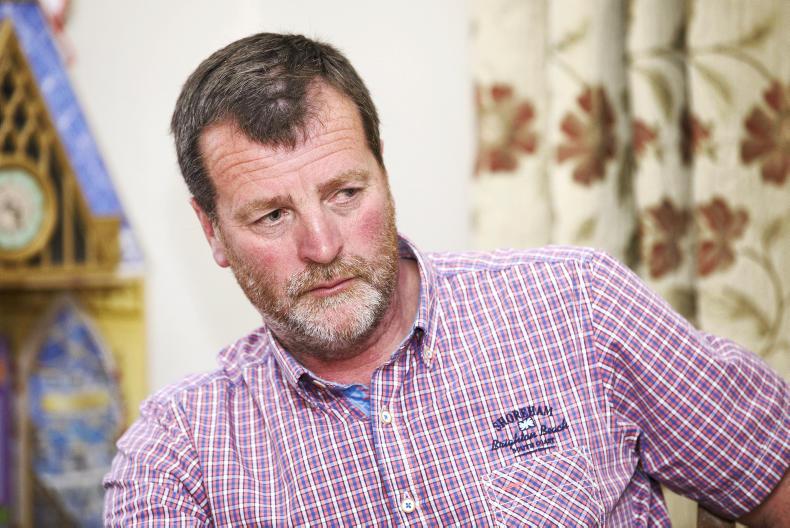
Pierce Delaney. \ Donal O'Leary
“The first load of cattle were going to the food chain but before they were loaded we got a call to get the lorries out of the yard. When the news got out, the butcher’s shops in Charleville virtually closed.”
In the case of John and Mary Breen it was a cow that had calved in August 1996 and they noticed she’d got progressively thinner. She was like a drunken cow. The Department was informed and within three days she was put down. “We were told to say nothing,” says John.
For John Brew it was the 23 August 2000 when his vet spotted a cow acting oddly. “He thought she’d been hurt leaving the parlour but when he’d approach her head she’d jump. She was tested, her head was taken away and she was buried on the farm. It would be the end of November before the herd was depopulated.”
However, his milk ceased to be collected from 24 August. All through the months of August, September, October and November the milk was spread on the land.
Fight on
Farmers like the Breens, Delaneys and Brews had to fight for a fair valuation for their stock. 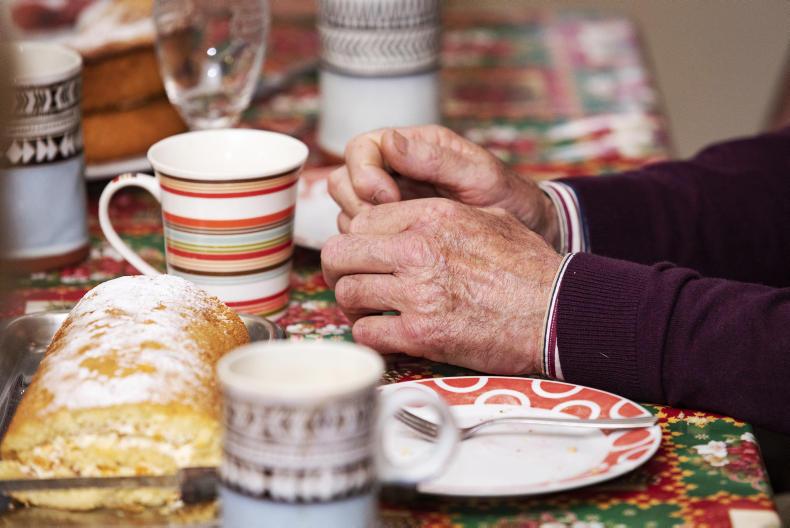
They had to do it with no income coming in, livestock to be fed, no farm assist, nothing. This led to Mary and John Breen establishing the BSE support group which helped farmers with BSE support each other.
“The questions would haunt you,” says John Brew. “Our twins were born in March that year so I had six good reasons to keep going. I got rid of every meal pellet and bit of baling twine I could find. I made gates to keep going.”
“We were taken out in 2000 and we were buying in the following year but weren’t fully restocked until 2002. That had an impact on the value of our single farm payment, the effects of which we still feel today.”
What really upset those farmers was the insinuation they’d made a fortune out of BSE. “Nothing could have been further from the truth. We were dumping milk for months. No liveweight gain was added to drystock. No consequential losses.”
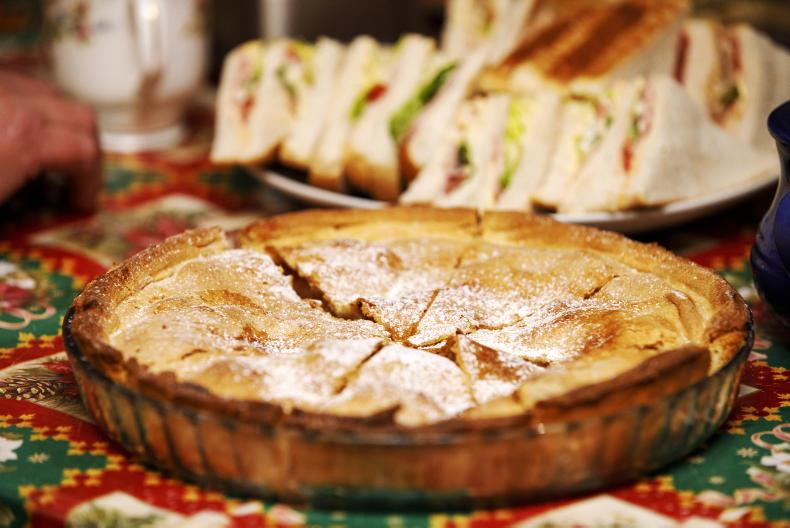
“We were restocking in March 1997 and that August, John was called to the Garda station, where he was shown a photo of a cow and a field and asked did he recognise her or the field. He didn’t and he was told she had caused a herd to be put down. The implication was that we were some way involved,” says Mary.
Pierce says the whole experience was like a death in the family. “Every hour is crystal clear to me. It took six months to get through it but years to get over it.”
All agreed that restocking was a gamble especially as brucellosis was rampant at the time. In all cases the affected animals were born on the farms and the families have no idea how they got BSE. All praised Department vet John Powell in Limerick as well as Patrick O’Sullivan and James Hannon in Clare.
Looking forward
Looking a few years ahead Michael Breen would expect to be retired with a long-term lease on the farm. “Sure it would take the hardship and paperwork out of life. Once BDGP is over, that will be the end of their discussion groups as well. I’ve discussed it with some of the groups and they are of the same opinion. And there’s no interest in rearing heifers for the dairy men.”
Talking about farming and family Pierce Delaney says“it will be their own choice whether or not to go farming.” When he started out the majority of farming was full time but that’s no longer the way.
Staying put
John Breen is more positive about the future. He will remain in dairying as will many of his farming friends. John believes issues around carbon will dominate the dairy sector in the years ahead.
“In the event of fertiliser being restricted I reckon you’ll see plenty of reseeding on dairy farms. The suckler herd will continue to decline unless something big happens. I don’t understand why the carbon cost of petrol and diesel is applied where it is used, while for food it’s applied where it’s produced.”
As to farming full time, it’s gone from a definite ‘no’ to ‘I don’t know’ but long term another income is needed here
Mary and John Breen have four children in their family with one son in Australia for the last seven years. “Our girls have no interest. Our other son, Patrick, is a plumber, has his own livestock and farms with us. As to farming full time, it’s gone from a definite ‘no’ to ‘I don’t know’ but long term another income is needed here.”
High rents
John Brew’s son Eoin is farming in partnership with his parents. John is concerned about the lack of suitable land to lease in his part of the country. “Lots of land is tied up in five- and 10-year leases. We are looking down the barrel of €300/ac and past it in places. We need more than the Land Mobility Service to address this and it needs to be done urgently. The next round of CAP has to be focused on the full-time farmer. Lads with forestry should be paid for the carbon land is using up.” C
We are around the kitchen table in Mary and John Breen’s lovely home in the townland of Attybreaga in east Limerick. What makes the place particularly interesting is that the county boundary between Limerick and Tipperary runs along the road outside their front door. So with farmers from Tipperary, Limerick and Clare around the table it was hard to avoid chat about hurling.
John and Mary extended the kitchen a few years ago and with plenty of space, a double height ceiling and big windows to take in the smashing views, it’s a great family room.
Early loss
John’s mother was born and reared in Attybreaga and his father married in. They had two boys, John and Denis who were born within a year of each other. Sadly their mother died from cancer when they were just 11 and 12. And if that wasn’t bad enough, their father died a few years later after a heart attack. The brothers were just 17 and 18.

John Breen. \ Donal O'Leary
“People thought we wouldn’t manage but we kept going. We were hand milking 15 cows and when we went up to 22, the hand milking was a torture. We got a bucket plant milking machine and that, along with help from our uncle Ned Moroney, meant we managed.”
“As I’ve gotten older I think it’s a huge, huge asset to have your parents alive and with you into your 30s at least. We had family and good neighbours, but you need your parents to point you in the right direction,” says John with a sense of sadness.
Love at first sight
Mary Breen née Franklin grew up about eight miles from where John lived. It was love at first sight when they met in the Golden Vale ballroom in Dundrum in 1976. “John was the first and only man in my life,” says Mary with a smile.

Mary Breen. \ Donal O'Leary
She wasn’t from a farming background but when visiting her uncles, she loved hand milking cows. After school, Mary won a scholarship to study agriculture and home economics with the Sisters of Charity in Dunmanway. She went from there to Golden Vale Co-op to train as a cheese maker and got all her exams. Then she broke her elbow and – try as she might – that finished her as a cheesemaker.
Mary and John were married in September 1981 and they got two Friesian heifers as presents and that helped bring cow numbers up to 35.
A grá for farming
Pierce Delaney was the first in his family to go farming. Originally from Ballincollig, Co Cork he upped sticks and moved to Ballyagran in Co Limerick where he bought 70 acres of land. “I always had a grá for farming and just went for it,” he says.

John Brew and Pierce Delaney. \ Donal O'Leary
Pierce learned his trade on the Farm Apprenticeship Scheme. That was an eye-opener for him. “There was a big variation in the type of farming family you could be placed with. In one place you’d be treated as slave labour, while in another you were like a member of the family.” Pierce started from scratch, buying the farm and building up facilities. He started with a quota of 30,000 gallons and milks 44 cows today.
Tough times
Neighbour Michael Breen is from Cullen, Co Tipperary and is no relation to the other Breens around the table. He left school at 15 as his dad was unwell, suffering from Parkinson’s and depression for the best part of 18 years.
He was in dairying all through the 1970s and 1980s and was depopulated with brucellosis in 1991.

Pierce Delaney, John Breen and Michael Breen. \ Donal O'Leary
“That was a tough time for us all. With my father ill, we leased the milk quota and got into dry cattle. Then after a few years it was a case of ‘use it or lose it’ with the milk quota and the lessee bought it out.”
These days it’s sucklers, mostly Charolais and a few Limousins that Michael farms. He joined the Beef Data and Genomics Programme (BDGP) scheme with a six-year contract and is sorry he did. “There’s no great interest in sucklers anymore and the returns are poor. But sure we have to stick with the contract and hope to re-coup the losses.”
Looking to the future
Also from Cullen, John Breen – again no relation to the other Breens – has been farming with his father and uncle for seven years. After secondary school he studied chemistry at university, before studying Pallaskenry Ag College.

John Breen. \ Donal O'Leary
“There were a good few from around here going and that influenced me. Also, a farm beside us was up for sale and we bought it and I doubt that would have happened if I wasn’t interested in coming home to farm.”
Unlike some of the kitchen tables we’ve been chatting around, here in the parish of Cullen there’s plenty of young blood coming into farming. “I could count 15 and more pals of mine who are farming. With milk quotas gone, lads were able to get going with the young entrant scheme. At home we are milking 260 cows, that’s double the number since I came home seven years ago,” says John.
An early start
“We are in dairying for as long as I can remember,” says John Brew from Kilkee, Co Clare. The family supplied the Dairy Disposal Company, then Golden Vale and following the ‘milk wars’ switched to Kerry.

John Brew. \ Donal O'Leary
When he was 16, John’s father took him to the local solicitors to sign some papers. “He’d bought me a 42-acre farm, at least that’s what was in it when the tide was out! The solicitor asked if I appreciated what I’d been given. My father answered him by saying, ‘He’ll appreciate it when he’s paid for it’.”
The farm came with 17 cattle which turned out to be the real bonus. “It was before we joined the European Economic Community (EEC) and when we did cattle prices rocketed. By the time the cattle were ready for sale they nearly made the price of the 42 acres.”
John took over the home farm in 1987 when he was 28 in partnership with his parents. “They bought the place in 1947 having come through the economic war. You could learn a thing or two from people of that generation – they knew how to survive.”
The terror of BSE
A quietness descended on the kitchen when it came time to talk about BSE.
As far as anyone could remember it was 1993 when the first suspicious BSE case appeared in a bull imported from the UK. “No one had a clue. It was the bovine AIDS of the 1990s.”
In Pierce Delaney’s case he noticed a cow groaning day and night. His vet tried a few things but there was no improvement. The Department of Agriculture was informed and on the 18-19 March 1996 his herd was depopulated. Following tests it was confirmed one animal in a herd of 100 had the disease.

Pierce Delaney. \ Donal O'Leary
“The first load of cattle were going to the food chain but before they were loaded we got a call to get the lorries out of the yard. When the news got out, the butcher’s shops in Charleville virtually closed.”
In the case of John and Mary Breen it was a cow that had calved in August 1996 and they noticed she’d got progressively thinner. She was like a drunken cow. The Department was informed and within three days she was put down. “We were told to say nothing,” says John.
For John Brew it was the 23 August 2000 when his vet spotted a cow acting oddly. “He thought she’d been hurt leaving the parlour but when he’d approach her head she’d jump. She was tested, her head was taken away and she was buried on the farm. It would be the end of November before the herd was depopulated.”
However, his milk ceased to be collected from 24 August. All through the months of August, September, October and November the milk was spread on the land.
Fight on
Farmers like the Breens, Delaneys and Brews had to fight for a fair valuation for their stock. 
They had to do it with no income coming in, livestock to be fed, no farm assist, nothing. This led to Mary and John Breen establishing the BSE support group which helped farmers with BSE support each other.
“The questions would haunt you,” says John Brew. “Our twins were born in March that year so I had six good reasons to keep going. I got rid of every meal pellet and bit of baling twine I could find. I made gates to keep going.”
“We were taken out in 2000 and we were buying in the following year but weren’t fully restocked until 2002. That had an impact on the value of our single farm payment, the effects of which we still feel today.”
What really upset those farmers was the insinuation they’d made a fortune out of BSE. “Nothing could have been further from the truth. We were dumping milk for months. No liveweight gain was added to drystock. No consequential losses.”

“We were restocking in March 1997 and that August, John was called to the Garda station, where he was shown a photo of a cow and a field and asked did he recognise her or the field. He didn’t and he was told she had caused a herd to be put down. The implication was that we were some way involved,” says Mary.
Pierce says the whole experience was like a death in the family. “Every hour is crystal clear to me. It took six months to get through it but years to get over it.”
All agreed that restocking was a gamble especially as brucellosis was rampant at the time. In all cases the affected animals were born on the farms and the families have no idea how they got BSE. All praised Department vet John Powell in Limerick as well as Patrick O’Sullivan and James Hannon in Clare.
Looking forward
Looking a few years ahead Michael Breen would expect to be retired with a long-term lease on the farm. “Sure it would take the hardship and paperwork out of life. Once BDGP is over, that will be the end of their discussion groups as well. I’ve discussed it with some of the groups and they are of the same opinion. And there’s no interest in rearing heifers for the dairy men.”
Talking about farming and family Pierce Delaney says“it will be their own choice whether or not to go farming.” When he started out the majority of farming was full time but that’s no longer the way.
Staying put
John Breen is more positive about the future. He will remain in dairying as will many of his farming friends. John believes issues around carbon will dominate the dairy sector in the years ahead.
“In the event of fertiliser being restricted I reckon you’ll see plenty of reseeding on dairy farms. The suckler herd will continue to decline unless something big happens. I don’t understand why the carbon cost of petrol and diesel is applied where it is used, while for food it’s applied where it’s produced.”
As to farming full time, it’s gone from a definite ‘no’ to ‘I don’t know’ but long term another income is needed here
Mary and John Breen have four children in their family with one son in Australia for the last seven years. “Our girls have no interest. Our other son, Patrick, is a plumber, has his own livestock and farms with us. As to farming full time, it’s gone from a definite ‘no’ to ‘I don’t know’ but long term another income is needed here.”
High rents
John Brew’s son Eoin is farming in partnership with his parents. John is concerned about the lack of suitable land to lease in his part of the country. “Lots of land is tied up in five- and 10-year leases. We are looking down the barrel of €300/ac and past it in places. We need more than the Land Mobility Service to address this and it needs to be done urgently. The next round of CAP has to be focused on the full-time farmer. Lads with forestry should be paid for the carbon land is using up.” C










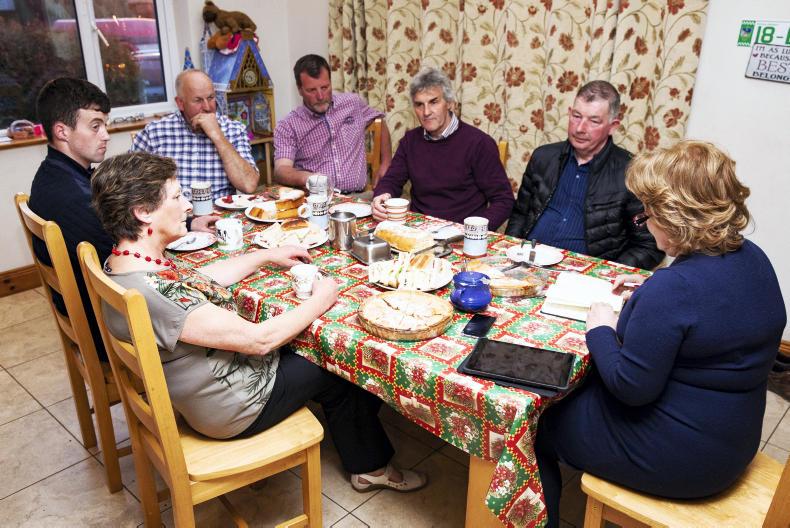




 This is a subscriber-only article
This is a subscriber-only article










SHARING OPTIONS: